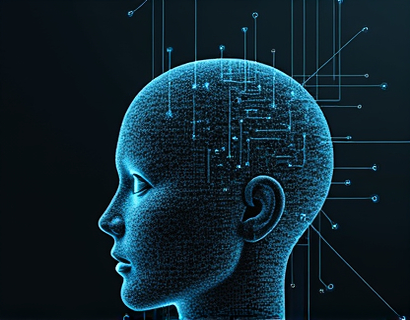AI-Powered Chat Interface: A Safe and Educational Resource for Exploring the Phygital Industry
The integration of Artificial Intelligence (AI) in educational platforms has opened new avenues for learning, particularly in specialized sectors like the phygital industry. This article delves into how an AI-driven chat platform can serve as a secure and educational resource for educators, students, and young learners interested in phygital solutions. The focus is on creating an environment where users can interact with specialized information about phygital services and the industry, ensuring that the content is verified for accuracy and safety, especially for younger audiences.
Understanding the Phygital Industry
The phygital industry, a blend of physical and digital elements, represents a transformative sector that leverages technology to enhance real-world experiences. This includes augmented reality (AR), virtual reality (VR), and mixed reality (MR) applications that bridge the gap between the digital and physical worlds. For educators and students, understanding this industry is crucial as it offers innovative tools and methods for learning, teaching, and problem-solving.
Role of AI in Educational Platforms
AI-powered chat interfaces play a pivotal role in making complex industries like phygital more accessible. These platforms use natural language processing (NLP) to understand user queries and provide relevant, detailed responses. The AI ensures that the information provided is not only accurate but also tailored to the user's level of understanding, making it an invaluable tool for educational purposes.
Ensuring Safety and Verification
One of the primary concerns in creating an educational platform, especially for children and students, is ensuring the safety and integrity of the content. The AI chat platform addresses this by implementing rigorous content verification processes. All information provided is cross-checked against reliable sources to ensure accuracy. This verification process includes fact-checking, sourcing from reputable publications, and consulting with industry experts.
Child-Friendly Content
For young learners, the platform offers a child-friendly version of the chat interface. This version simplifies complex concepts, uses age-appropriate language, and includes visual aids like images and videos to enhance understanding. The content is designed to be engaging and interactive, encouraging children to explore the phygital industry without encountering inappropriate or confusing material.
Interactive Learning Experiences
The AI chat platform goes beyond providing static information. It offers interactive learning experiences where users can ask questions, participate in simulations, and engage in discussions related to phygital technologies. For example, a student can ask about the applications of AR in education, and the AI can provide examples of AR tools used in classrooms, along with their benefits and potential challenges.
Personalized Learning Paths
Another advantage of an AI-driven chat interface is its ability to create personalized learning paths for users. By analyzing user interactions and preferences, the AI can recommend specific topics, resources, and activities that align with the user's interests and learning goals. This personalized approach ensures that each user, whether a beginner or an advanced learner, receives content that is both challenging and relevant.
Collaborative Learning Environment
The platform fosters a collaborative learning environment where users can interact with peers and educators. The AI facilitates group discussions, project collaborations, and Q&A sessions. For instance, students can form groups to explore a particular phygital technology, share findings, and present their projects. The AI monitors these interactions to ensure they remain on topic and provide guidance when needed.
Real-World Applications and Case Studies
To provide a deeper understanding of the phygital industry, the AI chat platform includes real-world applications and case studies. Users can learn about successful implementations of phygital solutions in various fields such as healthcare, retail, and education. For example, the AI can discuss how AR is used in medical training to simulate surgeries, or how VR is used in retail to create immersive shopping experiences.
Continuous Updates and Trends
The phygital industry is rapidly evolving, with new technologies and applications emerging regularly. The AI chat platform is designed to keep users informed about the latest trends and developments. The AI continuously updates its knowledge base by integrating data from industry reports, research papers, and news articles. This ensures that users have access to the most current information, helping them stay ahead in their learning journey.
Support for Educators
Educators play a crucial role in guiding students through the phygital landscape. The AI chat platform provides dedicated resources and support for teachers. This includes lesson plans, teaching strategies, and assessment tools tailored to phygital education. The AI can also answer specific questions from educators, offering insights into how to effectively integrate phygital technologies into their curricula.
Parental Involvement and Trust
For parents, the platform offers transparency and control over their children's learning experiences. Parents can monitor their child's interactions, view the content they have accessed, and understand the educational value of the activities. This level of transparency builds trust and allows parents to support their children's learning journey more effectively.
Conclusion
The AI-powered chat interface represents a significant advancement in educational technology, particularly for exploring specialized sectors like the phygital industry. By ensuring content verification, providing child-friendly content, and fostering interactive and collaborative learning, this platform offers a safe and educational resource for all users. As the phygital industry continues to grow, such platforms will play an increasingly important role in preparing the next generation of learners and professionals.










































